There are plenty of good reasons to think it should be impossible to make quality sparkling wine in Istria. Chief among them may be the atypical climate and soil, two factors that are locked in to location. Also, sparkling wine is technology intensive, in a country where communism enforced a low-tech lifestyle until just 28 years ago. So it is remarkable that the Peršurić family now make 11 traditional method sparkling wines in Istria, under the label Misal.
The family has lived in central Istria since 1540. Here, many tiny villages are still named after the first family to build there. Pršurići was once a hamlet of some 200 inhabitants, most of them named Peršurić. Today the population is about 80 and only a few people share the village name. But sisters Katarina Peršurić Bernobić and Ana Peršurić Palčić have, first with their late father Đordano and now with the help of their husbands, built a winery here that ensures the Peršurić name is known in Croatia wherever sparkling wine is poured.
In a conversation in their tasting room over glasses of Misal Blanc-de-Blancs, Katarina and Ana revealed how their father’s single-minded mission transformed them into sparkling wine specialists in a region where the odds were against success.
Rescuing Malvazija Istarska
Traditional method sparkling wine (made in the same way as Champagne) is not the only quality method, but it is the most demanding. The key difference between the traditional method and other simpler, cheaper processes, is how the bubbles get in the bottle. Rather than using large batches, in the traditional method each bottle is a mini production facility. The fermentation that creates the bubbles takes place inside the bottle you hold in your hands.
Champagne is only the best-known traditional method wine. It follows strict rules about which grapes can be used and other parameters of grape growing and production. But throughout France, different grapes are used in their own region to make crémant using this method. Cava, made in Spain, is also made this way, as is Franciacorta in Italy and thousands of individual sparkling wines in the United States, UK, Australia, South Africa and virtually every other winemaking country. Each country or region adapts its own grapes to the traditional method, although Chardonnay and Pinot Noir continue to be the Champagne standards.
When Đordano Peršurić first hit upon the idea of making sparkling wine, though, he was not trying to imitate Champagne. He was trying to save Malvasia.
Ana: “Our father first started sparkling production because in the past everyone thought … the Malvasia grape was just for low quality wine, table wine, something to drink just with Coke or with water, that you can not drink alone. Our father thought about how he could save Malvasia because in the late 80s everyone wanted to put away Malvasia and grow more popular grapes like Chardonnay, Sauvignon Blanc, Cabernet. International grapes.
“He started research on how to save Malvazija Istarska and then, getting [advice] from a colleague from Conegliano in Italy who produces spumante, how to produce sparkling wine and use an autochthonous grape for this sparkling wine. [His colleague] told our father, if you produce high quality wine and you show people that Malvasia wine doesn’t need to cost 1 euro, but can cost 10 euro, maybe people will want to produce this wine and start to grow vineyards with Malvasia again.”
Katarina: “For him the problem with Malvasia was in the winery, not in the vineyard. The wine grapes were always very nice, very yellow, good taste, but some people had a big problem with the winemaking.”

It was still a few years before Yugoslavia would split up. For the previous 40 years, grape growers were required to sell their harvested fruit to the local state-run co-operative winery. Any wine made at home was just for family and friends. With no way to sell wine for a living, people didn’t think about how to improve it. What they were used to was good enough. This helps to explain why Malvasia was so maligned.
Katarina: “It was 100 problems with Malvasia in the winery. They didn’t use [cultivated] yeast. They fermented at 45 degrees [113 degrees F]. Then we had a big problem with oxidation because they put the wine in acacia barrels and they didn’t keep the barrels full. We had at that time a late harvest, and then comes a freezing evening and fermentation stops and some of us still have sugar [in the wine]. We didn’t have yeast [to correct the problem], we had Yugoslavia, nothing could be imported.”
If the science of making quality still wine was behind that of the rest of the world, making quality sparkling wine was an uphill battle. Đordano Peršurić made his first two vintages of sparkling Malvasia without temperature control. Ana recalled, “We froze water in a container and we put this in the wine, put water outside [the tank], shaking everything. When it comes to Malvasia this is very important, temperature, because when it’s high temperature you extract so many bad tannins.” In 1994, Đordano bought their first refrigeration unit and a tank with a chilling sleeve.
Katarina: “After the 1990s, when the country of Croatia started, when you could go out and learn something new of technology, and technology came here, all the winemakers at that time bought refrigeration for the must and everything changed. This was our revolution in the winery — it was from 1990 to 2000. These ten years were the most important for Croatian wine.”
Building vines for soil and climate
Istria has two main types of vineyard soil: a white clay and terra rossa, the iron-oxide-rich red soil that the Peršurić vineyards grow on. Malvasia grows well in this soil, but the Chardonnay and Pinot Noir the family would grow to expand their line of wines were more suited to the light, limestone soils of Burgundy or Champagne.
Ana: “We started to produce sparkling wine with, I don’t know, maybe 10, 12 rows of Malvasia to 3 rows of Chardonnay and 3 rows of Pinot Noir that my grandfather grew, but just as a joke. So, a small vineyard for sparkling production. But in the years when we saw that we needed more types of sparkling wine — we needed to have Chardonnay and Pinot Noir — Father knew that our region isn’t the best for these two grapes, because these come from the north, a cold climate, not hot like us, and they are not good for our soil. So we did some research to find the best root and plant for our vineyard. Together we went to the nursery and we tasted all styles of Pinot Noir that they produce, and we chose: okay, this clone is for a hot climate but we want it with this root, because this root is for our soil. So we created our new plant in this nursery. I think the nurseryman thought we were crazy, but he didn’t know why we were doing it: because we have an unusual place to produce sparkling wine and we needed to find what would be best for us.
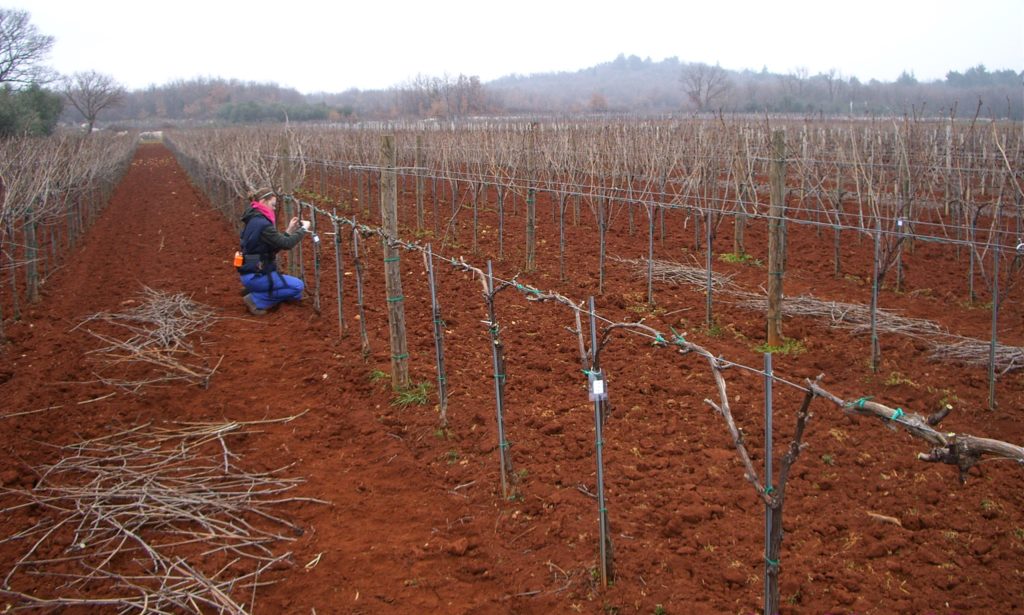
“We also needed to change the technology in the vineyard, to do new things, and be looking at what they do in the new wine world like Australia, South Africa. They have low pH, low sugar — we need this in our region, a very hot climate.
“I always say that in the summertime our vineyards look more like an English garden. We have so many leaves. We don’t pull leaves, we don’t [green harvest] the grapes, as other producers usually do. We need to save acidity in the grape; we don’t need high alcohol and high sugar. The grapes aren’t directly in the sun, they’re in the shadow, and it’s more humid inside [the foliage]. The grapes can ripen slowly. And we have a very early harvest, in the middle of August.”
The art of predicting the future
Misal’s oldest and youngest wines are still 100 percent Malvasia. The youngest is Signorina, which Ana describes as “a semidry sparkling wine, very fruity, easy to drink because it doesn’t have high alcohol. This is our answer to Prosecco. It’s not exactly Prosecco because it’s aged about two years on the yeast, but it has a very fresh taste.”
Istra is their longest-aged wine, an even blend of the 2007, 2008 and 2009 vintages, each given a distinct character. The 2007 is aged in a big old barrel used by their grandfather (and still in their grandmother’s cellar where it was built — it won’t fit out the door). The 2008 was a long maceration (seven days) and the 2009 is a young, fruity, high-acidity Malvasia. “This is sparkling wine only for food,” says Ana.
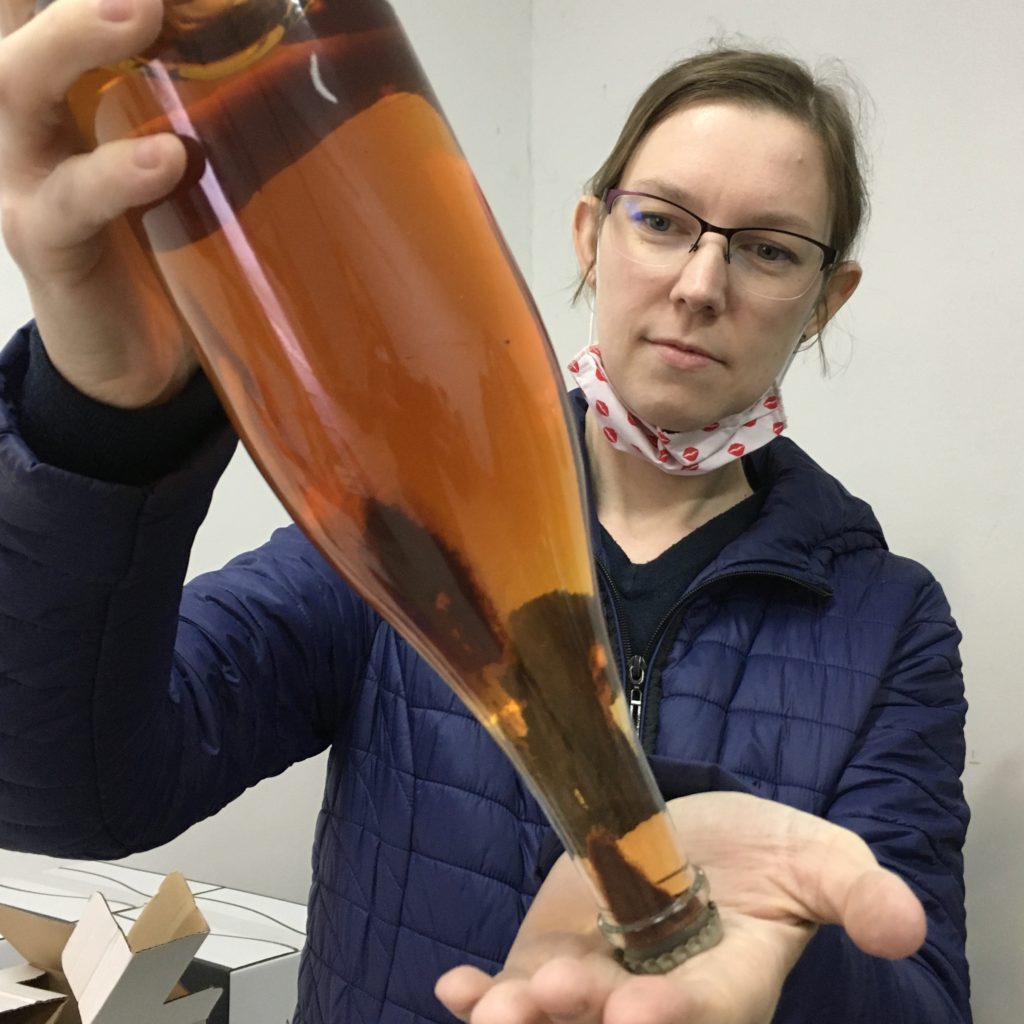
Katarina and Ana continue to look to the outside world to stay up to date on winemaking science. Now their challenges look more like those of sparkling wine producers in any other country: predicting what consumer demand will be and educating wine lovers about sparkling wine.
Ana: “We are always working many years before something comes. Always we’re thinking what may be interesting. A good sign is that everything that is popular in France, Spain, the United States, Australia — this will arrive in Croatia after two or three years. So we have enough time to prepare. We need to know what we want, and whether we can do that with our vineyard and our technology. If we cannot do it, we need to change something, prepare all the steps so when we want to do it we are ready and just need to produce, we don’t need to be magicians.
“For example in the first part of the 2000s, many tourists came to Croatia from Austria and Germany and started to ask for brut nature sparkling wine. We saw that in three or four years people would want to drink this because somebody brought a new fashion in wine style to our country, and after three or four years we had that style of wine. We have very good contact with our customers and listen to what they need and like, what is new.”
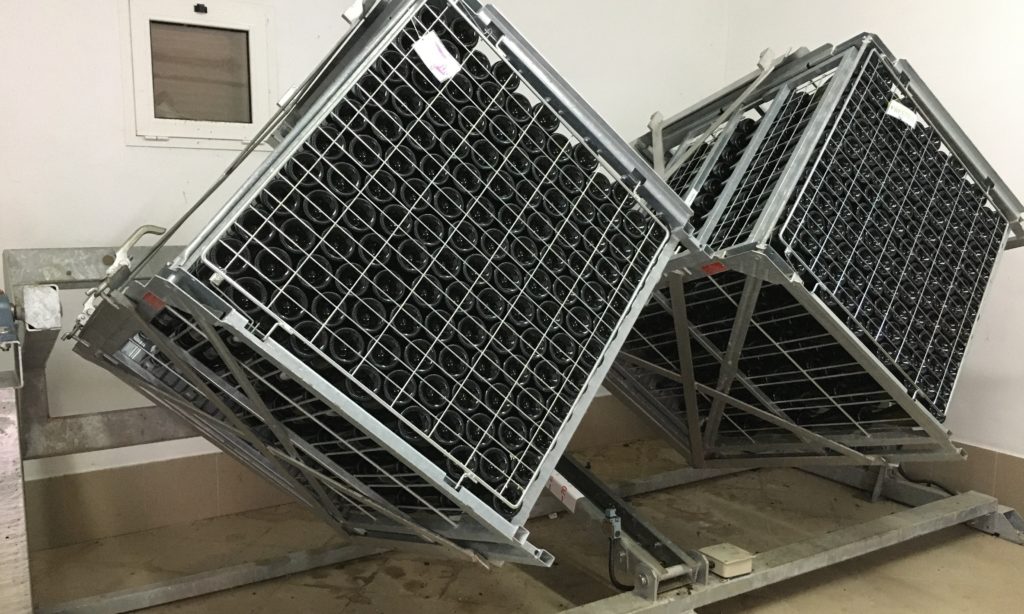
Ninety percent of Misal’s wines are sold within Croatia, primarily to tourists. But many consumers, whether Croatian or visitors, aren’t aware of how sparkling wine is made.
Ana: “When you say sparkling wine in Croatia it’s a word for everything. Pjenušac. Pjenušac is the name for everything, for frizzante, for Prosecco and for spumante. And this is a big problem because people will take a bottle labeled pjenušac that costs 10 kuna and say, ‘Yeah, I drink Champagne’ (oh my god, no!) and they take a bottle that costs 1,000 kuna and say, “Yes, I drink Champagne.’ It’s the same thing.
“So many times people ask us why we don’t have a vintage on the label. No way. We printed one maybe twice in all our history. Right now, young sparkling wine from our winery is 2016. People would look at the vintage and say, ‘2016, oh this is old wine, we won’t buy that.’ They don’t understand that for good sparkling wine you need years.”
Having lived the problems and successes of building a winery and the Misal brand over the past 28 years, Katarina and Ana don’t see seismic changes in their future.
Ana: “Mostly we have our i.d. This style of sparkling wine is our i.d. — it’s what we want to do. But our plan is always to stay as a family business. We don’t need to have a company with a million bottles — this is not our style. We really love the life we have. We have a good balance of job, our time with family, with friends. Everything we got from father we want to save and do the best we can.”
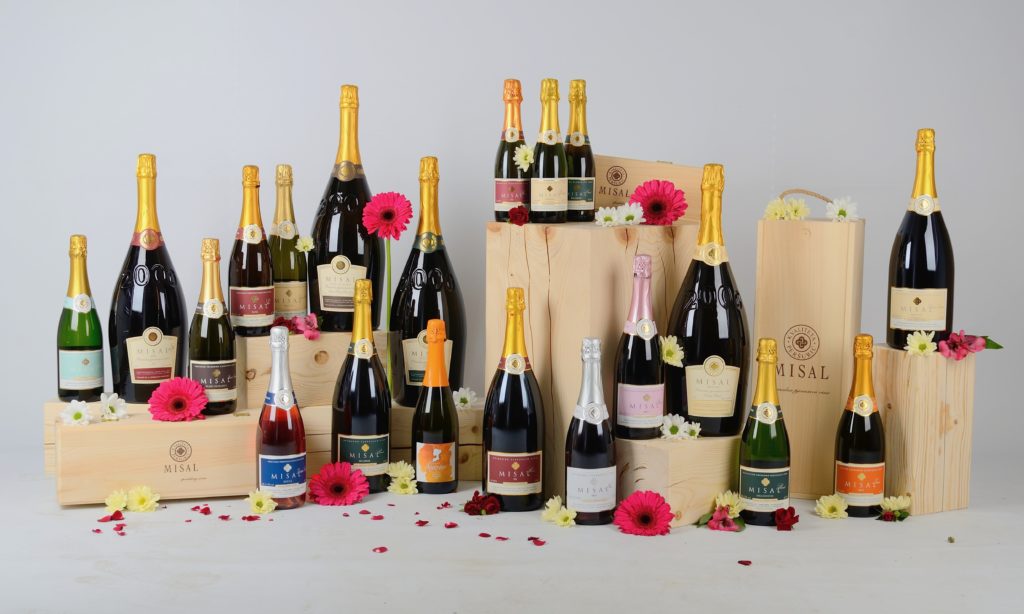
[Title photo: Sisters Ana Peršurić Palčić and Katarina Peršurić Bernobić of Misal winery stand in front of a display of bottles where sparkling wines were once stored to undergo secondary fermentation. (Staff/CCM)]

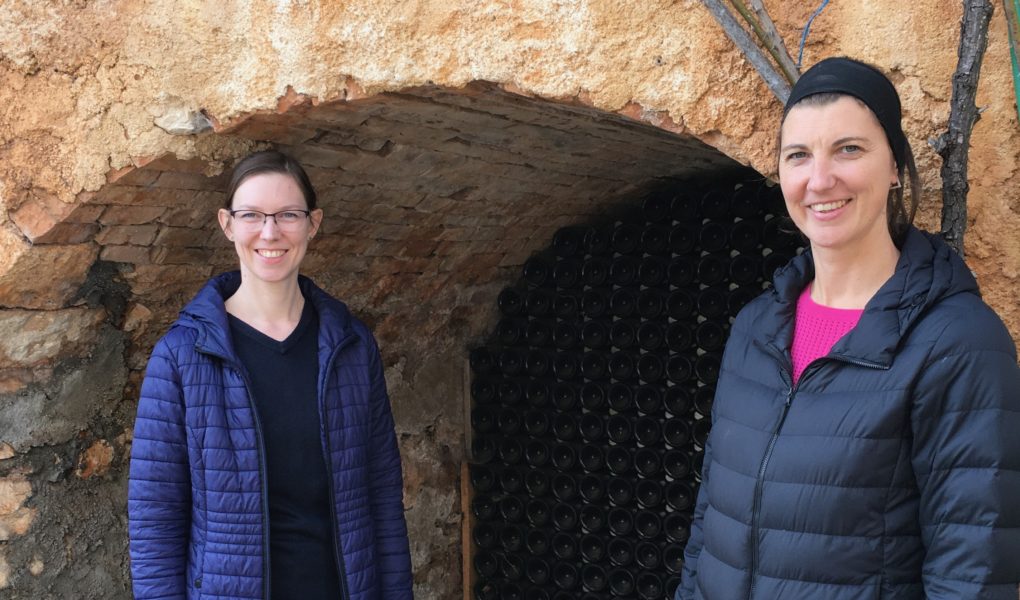
BEST WISHES moje ISTRIANE!CIAO
Great sparkling Wine from beautiful Istria